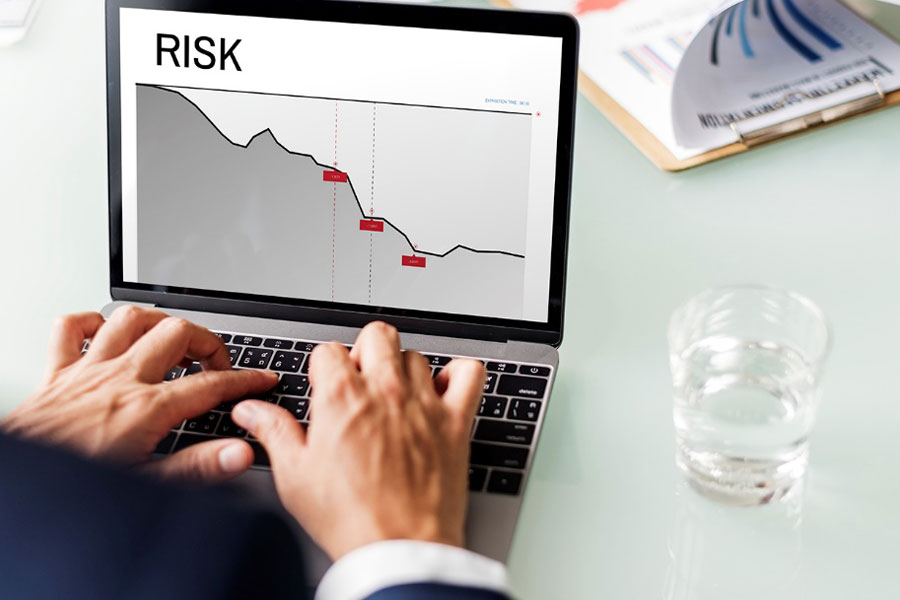Forex trading, the expansive and dynamic global marketplace facilitating the buying and selling of currencies, attracts millions of traders worldwide with the allure of potential profit and the promise of financial independence. However, despite its appeal and mystique, there is no singular secret to success in forex trading. Instead, mastering this complex arena requires a multifaceted approach rooted in knowledge, discipline, and a commitment to continuous improvement. Selecting the right broker for forex trading is a critical step in navigating this journey. In this comprehensive guide, we delve into the essential elements that form the foundation of successful forex trading, shedding light on the key principles and strategies that pave the way to success in this dynamic financial domain.

The Biggest Secret in Forex Trading: It’s All About Tips and Strategies
To gain a trading edge in the forex market, traders must master both technical and fundamental analysis. Understanding price charts, patterns, and technical indicators is essential for making informed trading decisions. Additionally, staying informed about global economic events, geopolitical developments, and central bank policies is crucial for anticipating market movements. Beyond these traditional tools, integrating advanced concepts such as Smart Money Concepts (SMC), Inner Circle Trader (ICT) methodologies, and the Return to the Mean (RTM) strategy can significantly enhance a trader’s edge.

Technical Analysis
Technical analysis involves studying price charts and using various indicators to predict future price movements. This section will delve into several essential tools and concepts, including moving averages, the Relative Strength Index (RSI), Fibonacci retracement levels, Bollinger Bands, MACD, as well as advanced techniques like Smart Money Concepts (SMC), Inner Circle Trader (ICT) methodologies, and the Return to the Mean (RTM) strategy.
Moving Averages
Moving averages are a fundamental tool in technical analysis, smoothing out price data to identify the direction of a trend. They are crucial for spotting trends and potential reversals. There are two main types of moving averages:
- Simple Moving Average (SMA): The SMA calculates the average of a selected range of prices, usually closing prices, by the number of periods in that range. For example, a 20-day SMA adds up the closing prices of the last 20 days and divides by 20. SMAs are useful for identifying long-term trends and smoothing out price data.
- Exponential Moving Average (EMA): The EMA gives more weight to recent prices, making it more responsive to new information compared to the SMA. It is calculated using a more complex formula that applies more significance to the most recent data points. EMAs are particularly useful for short-term trading and can provide earlier signals of trend reversals.
Moving averages are often used in combination with other indicators to confirm trends. For instance, when the short-term EMA crosses above the long-term EMA, it can signal a bullish trend, while a cross below can indicate a bearish trend.
Relative Strength Index (RSI)
The RSI is a momentum oscillator that measures the speed and change of price movements. It oscillates between 0 and 100 and is typically used to identify overbought or oversold conditions in a market. An RSI above 70 often indicates an overbought condition, suggesting that the price might be due for a correction. Conversely, an RSI below 30 suggests an oversold condition, indicating that the price might rebound.
RSI can also be used to spot divergences, which occur when the price makes a new high or low that is not confirmed by the RSI. This divergence can signal a potential reversal. For example, if the price makes a new high but the RSI does not, it could indicate weakening momentum and a possible downturn.
Fibonacci Retracement Levels
Fibonacci retracement levels are based on the key numbers identified by mathematician Leonardo Fibonacci. These levels are used to identify potential reversal levels by plotting horizontal lines at the key Fibonacci levels of 23.6%, 38.2%, 50%, 61.8%, and 100%. Traders use these levels to determine potential entry points, stop losses, and take profits.
When a market is trending, it often retraces a portion of the move before continuing in the original direction. By plotting the key Fibonacci levels on a price chart, traders can identify potential support and resistance levels where the price might reverse. For instance, if a currency pair is in an uptrend and begins to retrace, traders might look for buying opportunities around the 38.2% or 50% retracement levels.
Read more: The Mindset of a Successful Trader
Bollinger Bands
Bollinger Bands consist of a middle band (usually a 20-period SMA) and two outer bands that are standard deviations away from the middle band. Bollinger Bands expand and contract based on market volatility. When the bands are close together, it indicates low volatility, while wide bands suggest high volatility.
Traders use Bollinger Bands to identify overbought or oversold conditions and to signal potential reversals. For example, if the price moves above the upper Bollinger Band, it might be overbought and due for a correction. Conversely, if the price moves below the lower Bollinger Band, it might be oversold and due for a bounce. Bollinger Bands can also help identify breakout opportunities when the price moves outside the bands with strong momentum.
MACD (Moving Average Convergence Divergence)
The MACD is a trend-following momentum indicator that shows the relationship between two moving averages of a security’s price. The MACD is calculated by subtracting the 26-period EMA from the 12-period EMA. A signal line, which is a 9-period EMA of the MACD, is then plotted on top of the MACD line, which can function as a trigger for buy and sell signals.
When the MACD crosses above the signal line, it indicates a bullish signal, suggesting that it might be a good time to buy. When the MACD crosses below the signal line, it indicates a bearish signal, suggesting that it might be a good time to sell. The MACD can also be used to identify divergences, which can signal potential reversals.
Smart Money Concepts (SMC)
Smart Money Concepts focus on the actions of institutional investors, often referred to as “smart money.” By understanding the behavior of large financial institutions, traders can identify key areas of liquidity and potential market moves. Key elements of SMC include:
- Order Blocks: Areas where institutions place large orders, often leading to significant support or resistance levels. Recognizing these blocks helps traders anticipate potential price reactions and reversals.
- Liquidity Pools: Zones where liquidity is high, typically around psychological price levels, previous highs/lows, and round numbers. These pools are areas where stop-loss orders and pending orders are clustered, providing opportunities for smart money to execute trades.
- Market Manipulation: Recognizing patterns where smart money may push prices to trigger stop-loss orders before moving in the intended direction. This includes tactics like stop hunts, where prices are driven to levels that trigger retail traders’ stop-loss orders, creating liquidity for institutional trades.
Inner Circle Trader (ICT) Methodologies
ICT methodologies, developed by Michael Huddleston, focus on advanced trading techniques based on understanding market structure, liquidity pools, and high-probability setups. Core principles of ICT include:
- Market Structure: Identifying the overall trend by analyzing higher highs, higher lows, lower highs, and lower lows. Understanding market structure helps traders determine the dominant trend and potential reversal points.
- Liquidity Pools: Recognizing areas where stop-loss orders and pending orders are likely to be clustered, providing opportunities for smart money to execute trades. These areas often correspond to significant support and resistance levels.
- Optimal Trade Entries (OTE): Using Fibonacci retracement levels to pinpoint precise entry points within a larger trend. OTE involves looking for confluences of technical factors, such as Fibonacci levels and key support/resistance zones, to identify high-probability entry points.
Return to the Mean (RTM)
The Return to the Mean strategy involves identifying extreme price movements and anticipating a correction back to the average price level. This strategy is based on the principle that prices will revert to their mean or average over time. Key components of RTM include:
- Identifying Extremes: Using indicators such as Bollinger Bands or RSI to spot overbought or oversold conditions. When prices deviate significantly from their mean, they are likely to revert.
- Mean Calculation: Determining the mean price using moving averages or other statistical methods. This average serves as a target level for the reversion.
- Entry and Exit Points: Timing entries at extreme levels and exiting trades as prices revert to the mean. Traders look for confirmation signals, such as candlestick patterns or other indicators, to enter trades at optimal points.
Integrating these advanced concepts into your technical analysis can significantly enhance your trading edge. By combining traditional tools with insights from SMC, ICT, and RTM strategies, traders can develop a comprehensive and effective approach to navigating the forex market.
Fundamental Analysis
Fundamental analysis focuses on the economic and political factors that influence currency prices. It involves assessing the underlying strength and outlook of economies to anticipate currency movements. Fundamental factors include economic indicators, central bank policies, geopolitical events, trade balances, and interest rate differentials.
Economic Indicators
Economic indicators are vital tools for fundamental analysis in forex trading. Key indicators include:
- Gross Domestic Product (GDP): Measures the total value of goods and services produced in a country. Higher GDP growth typically strengthens a country’s currency.
- Employment Data: Employment figures, including unemployment rates and non-farm payroll data, indicate the health of the labor market. Strong employment data can boost a currency.
- Inflation Rates: Inflation impacts purchasing power and interest rates. Central banks may raise interest rates to combat high inflation, which can strengthen the currency.
- Consumer Price Index (CPI): Measures changes in the price level of a basket of consumer goods and services. It is a key indicator of inflation.
- Retail Sales: Retail sales data reflects consumer spending and economic health. Strong retail sales can positively impact a currency.
Understanding these economic indicators and their impact on currency values is essential for fundamental analysis.
Central Bank Policies
Central banks play a crucial role in shaping currency values through their monetary policy decisions. Key factors to consider include:
- Interest Rate Decisions: Central banks adjust interest rates to control inflation and stimulate economic growth. Higher interest rates attract foreign investment, leading to currency appreciation.
- Monetary Policy Statements: Central banks issue policy statements and meeting minutes that provide insights into future policy direction. Hawkish statements, indicating a tightening of monetary policy, can strengthen a currency, while dovish statements, indicating an accommodative stance, can weaken a currency.
- Quantitative Easing (QE): Central banks implement QE programs to inject liquidity into the economy, which can weaken a currency by increasing the money supply.
Understanding central bank policies and their implications for currency markets is crucial for fundamental analysis.
Geopolitical Events
Geopolitical events, such as political instability, elections, and international conflicts, can significantly impact currency prices. Key considerations include:
- Political Stability: Stable governments and favorable political environments attract foreign investment, strengthening a country’s currency.
- Elections: Political uncertainty surrounding elections can lead to volatility in currency markets. Traders closely monitor election outcomes and policy implications for currency movements.
- International Conflicts: Military conflicts or geopolitical tensions can create uncertainty and risk aversion, leading to currency depreciation.
Understanding the geopolitical landscape and its potential impact on currency markets is essential for fundamental analysis.
Trade Balances
The trade balance measures the difference between a country’s exports and imports. A positive trade balance, or trade surplus, occurs when exports exceed imports, leading to currency appreciation. Conversely, a negative trade balance, or trade deficit, occurs when imports exceed exports, leading to currency depreciation.
- Export Demand: Strong demand for a country’s exports boosts its currency as foreign buyers need to purchase the domestic currency to transact.
- Import Demand: High import demand can weaken a currency as domestic buyers need to exchange their currency for foreign currencies to pay for imports.
Understanding trade balances and their implications for currency values is essential for fundamental analysis.
Interest Rate Differentials
Interest rate differentials compare the interest rates of two currencies. Central banks adjust interest rates to control inflation and stimulate economic growth. Currencies with higher interest rates tend to attract foreign investment, leading to currency appreciation. Conversely, currencies with lower interest rates may depreciate as investors seek higher returns elsewhere.
- Carry Trade: Investors borrow funds in currencies with low-interest rates and invest in currencies with higher interest rates to profit from the interest rate differential. Carry trades can influence currency values and lead to trends in the forex market.
Understanding interest rate differentials and their impact on currency values is essential for fundamental analysis.
Discipline and Consistency
Successful forex trading requires strict discipline and consistent execution of trading plans. This means adhering to your strategy, managing risk appropriately, and avoiding emotional decision-making.
Sticking to Your Plan
Developing a clear trading plan is essential for success in forex trading. Your trading plan should outline your trading strategy, including entry and exit rules, risk management guidelines, and trade management strategies. Once you have a plan in place, it’s crucial to stick to it consistently, even in the face of market fluctuations.
Managing Risk
Risk management is a critical aspect of forex trading. It involves determining the amount of capital to risk on each trade and implementing stop-loss orders to limit potential losses. Proper risk management helps protect your trading capital and ensures longevity in the forex market.
Avoiding Emotional Trading
Emotions can cloud judgment and lead to impulsive trading decisions. Fear and greed are common emotions that can drive traders to deviate from their trading plans. By staying disciplined and maintaining a rational mindset, traders can avoid emotional trading and make decisions based on logic and analysis.
Read more: Market Makers in Forex
Continuous Learning and Adaptability
The forex market is dynamic and ever-changing, requiring traders to continuously learn and adapt to new market conditions.

Continuous Practice and Backtesting
Practice is essential for honing trading skills and gaining experience. Traders can practice their strategies in a simulated trading environment, known as a demo account, without risking real capital. Additionally, backtesting allows traders to test their strategies on historical data to assess their performance and identify areas for improvement.
Keeping Up with Market Trends
Staying informed about market trends and developments is crucial for successful trading. Traders should regularly monitor economic indicators, central bank announcements, geopolitical events, and other factors that can impact currency prices. By staying abreast of market news and trends, traders can make informed trading decisions and adapt their strategies accordingly.
Risk and Capital Management
Effective risk and capital management are essential for preserving trading capital and achieving long-term profitability.

Position Sizing
Position sizing involves determining the appropriate amount of capital to risk on each trade based on your account size and risk tolerance. Traders should avoid risking more than a small percentage of their trading capital on any single trade to protect against significant losses.
Setting Stop-Loss Orders
Stop-loss orders are crucial for managing risk and limiting potential losses. A stop-loss order is a predetermined price level at which a losing trade will be automatically closed out. By setting stop-loss orders at strategic levels, traders can protect their capital and minimize losses in adverse market conditions.
Read more: Risk management principles
Diversification
Diversification involves spreading risk across multiple trades and asset classes. By diversifying their trading portfolio, traders can reduce the impact of individual trade losses and increase the overall stability of their trading performance. Diversification can be achieved by trading multiple currency pairs, asset classes, or trading strategies.
Risk-to-Reward Ratio
The risk-to-reward ratio measures the potential reward of a trade relative to its risk. A favorable risk-to-reward ratio ensures that potential profits outweigh potential losses, providing a positive expectancy over the long term. Traders should aim for a risk-to-reward ratio of at least 1:2, meaning that for every dollar risked, there is the potential to make at least two dollars in profit.
Managing Emotions
Emotions play a significant role in trading psychology and can influence decision-making processes. Successful traders learn to manage their emotions effectively to avoid impulsive and irrational behavior.
Emotional Awareness
Awareness of one’s emotions is the first step in emotional management. Traders should recognize common emotional triggers, such as fear, greed, and frustration, and learn to identify their emotional responses to market events.
Mindfulness and Meditation
Mindfulness techniques, such as meditation and deep breathing exercises, can help traders stay calm and focused during periods of market volatility. By practicing mindfulness, traders can cultivate a sense of inner peace and detachment from their emotions, allowing them to make clearer and more rational trading decisions.
Setting Realistic Expectations
Setting realistic expectations is essential for managing emotions in trading. Traders should understand that losses are inevitable in forex trading and that no strategy can guarantee profits 100% of the time. By accepting the inherent risks of trading and maintaining realistic expectations, traders can reduce the emotional impact of losses and stay focused on their long-term goals.
Conclusion
The biggest secret in forex trading is that there is no single secret. Success comes from mastering a combination of strategies, maintaining discipline, continuously learning, and effectively managing risk and emotions. By developing a robust trading plan and adhering to these principles, traders can enhance their trading edge and achieve long-term profitability in the forex market.
What is the importance of liquidity in forex trading?
Liquidity refers to how easily a currency can be bought or sold without affecting its price. High liquidity ensures smoother transactions, tighter spreads, and less slippage, making it easier for traders to enter and exit positions.
How does geopolitical instability affect forex markets?
Geopolitical instability, such as political conflicts, elections, and international tensions, can create uncertainty and volatility in forex markets. Traders often seek safe-haven currencies during such times, leading to significant fluctuations in currency prices.
What psychological strategies can help manage emotions in trading?
Techniques such as mindfulness meditation, setting realistic goals, and keeping a trading journal can help traders stay focused and make rational decisions.
What is the role of leverage in forex trading?
Leverage allows traders to control larger positions with a smaller amount of capital. While leverage can amplify profits, it also increases the risk of significant losses. It is essential to use leverage cautiously and implement proper risk management techniques to protect your trading account.
How do I choose a reliable forex broker?
Choosing a reliable forex broker involves considering factors such as regulatory status, trading platform, customer service, and trading conditions (spreads, commissions, leverage, etc.). Ensure the broker is regulated by a reputable authority and has positive reviews from other traders.
Can I make a living from forex trading?
Making a living from forex trading is possible, but it requires substantial knowledge, experience, discipline, and a significant amount of capital. Many traders achieve consistent profitability over time, but it is essential to approach trading with realistic expectations and a well-developed trading plan.
What are the common mistakes to avoid in forex trading?
Common mistakes in forex trading include overtrading, failing to use stop-loss orders, trading without a plan, letting emotions drive decisions, and not keeping a trading journal. Avoiding these mistakes can significantly improve your trading performance.
How important is back testing in forex trading?
Back testing is crucial as it allows traders to evaluate the effectiveness of their trading strategies using historical data. This process helps identify strengths and weaknesses in the strategy, enabling traders to make necessary adjustments and improve their approach.








One Response
constantly i used to read smaller articles which also clear their motive,
and that is also happening with this paragraph which I am reading at
this place.